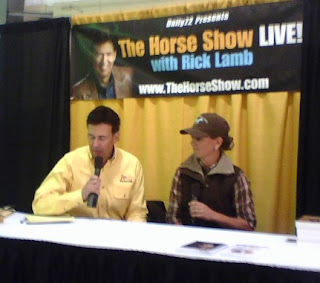
Alternative Horsemanship™ with Samantha Harvey the Remote Horse Coach shares horse training and horseback rider coaching, philosophies, and approaches she has developed over three decades. Offering horsemanship clinics worldwide, distance horse coaching instruction, equine consultations, equine re-education and rehabilitation, colt starting, and lessons. Follow her #alternativehorsemanship on all social media platforms.
Pages
- What is Alternative Horsemanship?
- About Equestrienne and Horse Coach Samantha Harvey
- Full Immersion Horsemanship Clinics
- Remote Horse Coach- Personalized Distance Learning with Alternative Horsemanship
- Video Courses & Classes
- Horse Behavior Course
- Horse Shopping Help Online Course
- Livestream w Q & A
- Horse Webinars
- Alternative Horsemanship Client Testimonials
- YouTube
- TikTok
- Newsletter
- Horse Humor Journal
Seeing the Details- Learning Horse Behavior
LIVE Q & A Alternative Horsemanship Videos
Learning to read Horse Behavior
Refining Ground Work with the Horse
Refining Ground Work with the Horse
Whenever I show up to work with a horse I go through a mental checklist assessing things such as:
- Where is the horse’s mind today?
- How is the horse looking/feeling in his postures, breathing, and movement?
- What was the feeling or energy he offered when greeting me in his pasture or stall?
- Does he seem mentally available as I ask to halter, lead, and stop at the gate?
Bolting Horse and other Unwanted Behavior
Having not seen the horse or knowing their history, here is my initial take on this common scenario.
Improving your Equine Skill Set
Improving your Equine Skill Set
Everything that we do in life requires different skill sets. Unfortunately, when it comes to horses, many folks approach it as an "I bought it, I should be able to do it." But the reality can turn out quite different.
One of the challenges for both pleasure and competitive riders is prioritizing the time and having the mental clarity to build their skill set when it comes to their horsemanship.
Fear Limiting our Horsemanship
"Last time I tried to ___________ my horse __________ and I don't want that to happen again."
"What if my horse _______, then we won't be able to _______, so I better not ________ to cause an issue."
Information is a wonderful tool for advancing and improving your relationship with the horse. If for a moment we set aside the cliche "good" or "bad" categories when thinking about our experiences, and instead saw them as more information to make better-educated decisions in how we approach working with the horse in the future.
Re-educating the dangerous and abused horse
This youngster had arrived after a rough initial start then eventual rescue. There is a big moment when familiar things such as tack is presented and a horse has the opportunity to be near it, while loose, that they will display how they really feel about it. In this case, preparing to tack while she was loose, feeling confident and relaxed, was quite the progression from the horse that couldn't stand still and was fleeing constantly when I first met her. It isn't about her obediently standing, it is about her offering to present herself in a confident, quiet manner, trusting and trying.
#FifteenForFriday LIVE video series
You can also LIKE the page Alternative Horsemanship with Samantha Harvey
Basics of Balance: Assessing your riding behaviors
When the rider has the ability to use all of their aids (hands, seat, upper leg, lower leg, upper body, head) independently of one another.
i.e. If you move your left rein does your right lower leg grip the horse's side? If you rise up in the upward motion of the post in the trot, do you tighten your fingers on the reins? When you are trying to turn your horse with the rein and you lean with your upper body towards the direction you were attempting to turn.
Challenges:
A major challenge for folks creating independent aids is a general lack of body awareness in general.
Yes, they are sitting in the saddle. But how? Are their seat bones "plugged in?" Do they understand what part of their body conveys what communication towards their horse? Are they able to offer a variety of energy in their fingers, seat, and legs?
Why Remote Coaching? Proven Results!
"Having tried several trainers, I was on the verge of replacing my gelding. He would become defensive and refuse to go forward, start spinning, backing, or bucking at the lope. Other trainers had tried to "ride the buck" out of him. This only made him more resentful and insecure. I tried everything, from chiropractic treatment, replacing his saddle pad, changing his feed and starting over on the ground. However, riding him into a lope was beyond my comfort level and he would buck going into the lope even on the ground. Sam not only had the patience to help me rebuild his confidence, but gave me tools to help him as well. Now I have a horse that is learning to trust again and thanks to Sam, when he gets stuck, I can help him through it. Sam's approach is very effective and I have learned so much from her. I look forward to continuing to work with her and my horse."





